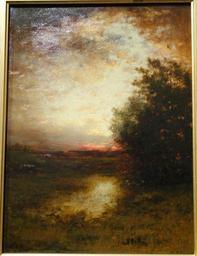Introduction
In the vast universe of art forms, photography stands out as an instrument not just for capturing images but for expressing emotions, thoughts, and narratives. Among its many branches, contemplative photography emerges as a profound method that transcends mere visual representation. It invites photographers to engage deeply with their surroundings and to seek meaning through their lens. By focusing on the aesthetic qualities in art, this practice encourages self-reflection and personal expression, turning every photograph into a story waiting to be told.
In this article, we will explore contemplative photography, delving into its philosophies, techniques, and its relationship with various art forms. We’ll also touch upon how it intersects with trends like aesthetic photography, self-portrait photography, and even modern home decor practices. So grab your camera or smartphone, and let’s embark on this artistic journey together!
Contemplative Photography: Finding Meaning Through the Lens
Contemplative photography is more than just snapping pictures; it’s about being present in the moment and observing life through a mindful lens. This approach emphasizes awareness of one's environment and encourages photographers to cultivate a deeper understanding of their subjects.
Understanding Contemplative Photography
Definition and Philosophy- At its core, contemplative photography is rooted in mindfulness—a practice that encourages individuals to observe their thoughts without judgment. The act of photographing becomes a meditative process whereby the photographer engages with their surroundings and captures moments that resonate on an emotional level.
- Mindfulness enhances one’s perception by fostering a state of awareness that allows artists to see beyond the surface. In contemplative photography, every click of the shutter is an opportunity to pause and reflect, leading to richer imagery.
- Every image tells a story; however, contemplative photography seeks to deepen that narrative by integrating personal experiences and emotions into the visual composition.
- Through contemplation, photographers may uncover aspects of their identity in art that they weren’t aware existed—transforming simple photographs into profound expressions of self.
The Techniques Behind Contemplative Photography
1. Observation Skills
- Developing keen observation skills is essential for contemplative photographers. Rather than rushing through scenes or relying solely on instinctive reactions, they take time to soak in details—the play of light, shadows dancing across surfaces, or even subtle movements within nature.
2. Slow Photography
- Embracing slow photography allows one to take fewer shots but with greater intention. This technique encourages patience—waiting for the right moment when everything aligns perfectly within the frame.
3. Finding Beauty in Imperfection
- Contemplative photographers often find beauty in what others might overlook: a crooked fence post bathed in evening light or faded paint on an old door can evoke powerful emotions when seen through an attentive lens.
4. Emotional Reflection
- Each photograph taken serves as a reflection of feelings experienced at that moment—joy, sadness, nostalgia—all contributing layers to the image's meaning.
Exploring Aesthetic Photography
While contemplative photography focuses on rare home interior pictures deeper meanings behind images, it often overlaps with trends like aesthetic photography—a style emphasizing pleasing visuals.

1. Connection Between Aesthetics and Emotion
- Aesthetic qualities in art enhance emotional engagement; colors can evoke moods while composition guides viewers’ eyes toward focal points filled with significance.
2. Artistic Choices in Color Palettes
- Choosing color palettes intentionally can amplify the emotional impact of photographs—soft pastels may evoke tranquility while vibrant hues can convey excitement or energy.
Self-Portrait Photography as Introspection
Self-portrait photography offers unique opportunities for self-expression within contemplative practices:
Faceless Portraits- Using faceless portraits allows artists to convey identity without reliance on facial features—encouraging viewers to connect more intimately with themes rather than specific likenesses.
- Abstracting form can lead viewers down paths of interpretation—inviting them into complex narratives surrounding identity in art.
Integrating Art Techniques: Linocut & Woodblock Printing
Using traditional art techniques like linocut printing or woodblock printing can complement photographic practices:
Textural Depth in Prints- These techniques add dimensionality that enhances visual storytelling—allowing photographs to serve as canvases for further artistic exploration.
- Combining various art forms creates eclectic collections rich with meaning—inviting interaction between different visual experiences within home decor settings.
FAQs About Contemplative Photography
What is contemplative photography?
Contemplative photography is an approach focused on mindfulness where photographers engage deeply with their environment to capture meaningful Osku Leinonen Photography black-and-white art prints moments through their lens.
How does mindfulness affect photography?
Mindfulness enhances observation skills by promoting awareness of surroundings while encouraging patience and deeper emotional connections with subjects captured on camera.
Can self-portraiture be considered contemplative?
Absolutely! Self-portraiture provides valuable opportunities for introspection; artists use images not only as representations but also as explorations into identity and emotion.
What role do aesthetics play in contemplative photography?
Aesthetics are crucial as they influence emotional responses; thoughtful consideration regarding color palettes and compositions can significantly enhance storytelling within photographs.
How can I start practicing contemplative photography?
Start by slowing down during photographic sessions—focus intently on your subject matter while reflecting on your feelings about what you see before clicking away at your camera's shutter button!
Is there any specific equipment needed for contemplative photography?
While professional gear can enhance quality outputs, what matters most is mindset—you can practice contemplative techniques using anything from smartphones to high-end cameras!
Conclusion
In conclusion, contemplative photography isn’t merely about capturing beautiful images; it's about exploring one's inner world through external observations—a true merging between self-expression in art and visual storytelling techniques! As you venture into this engaging practice armed with newfound insights from our discussion here today—from aesthetic trends influencing contemporary approaches down through traditional methods enhancing modern displays—it’s vital always remember: every photograph has potential if layered thoughtfully over time!
So grab your camera (or smartphone), embrace mindfulness during each shot taken—and who knows? You might uncover depths previously overlooked along life’s journey captured beautifully through the lens!
Feel free to dive deep into these topics further! Each section could elaborate endlessly based upon individual perspectives enriching overall discourse around such captivating facets found within contemplation itself!